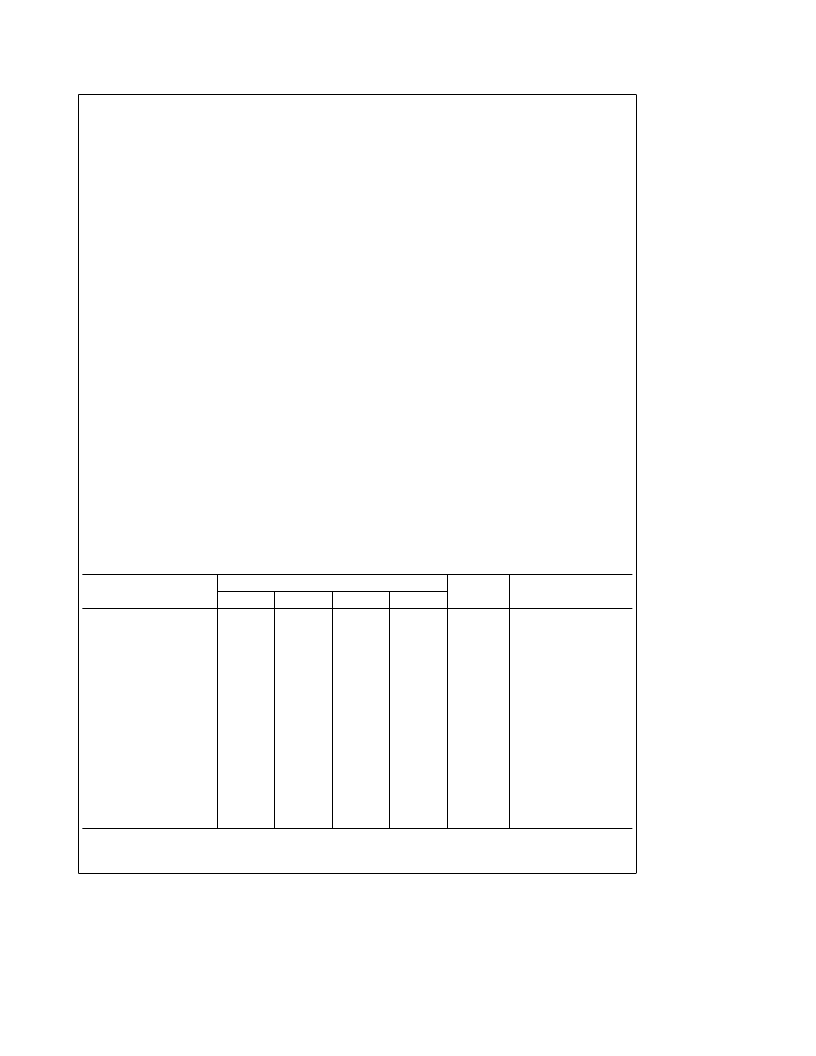- 您現(xiàn)在的位置:買賣IC網(wǎng) > PDF目錄382334 > MM58274C (National Semiconductor Corporation) Microprocessor Compatible Real Time Clock PDF資料下載
參數(shù)資料
| 型號: | MM58274C |
| 廠商: | National Semiconductor Corporation |
| 英文描述: | Microprocessor Compatible Real Time Clock |
| 中文描述: | 微處理器兼容的實(shí)時時鐘 |
| 文件頁數(shù): | 6/16頁 |
| 文件大?。?/td> | 228K |
| 代理商: | MM58274C |

Functional Description
(Continued)
device which are synchronously clocked by this signal. All
time data and data-changed flag change on the falling edge
of the clock setting pulse.
Data-Changed Flag
The data-changed flag is set by the clock setting pulse to
indicate that the time data has been altered since the clock
was last read. This flag occupies bit 3 of the control register
where it can be tested by the processor to sense data-
changed. It will be reset by a read of the control register.
See the section, ‘‘Methods of Device Operation’’, for sug-
gested clock reading techniques using this flag.
Seconds Counters
There are three counters for seconds:
a) tenths of seconds
b) units of seconds
c) tens of seconds.
The registers are accessed at the addresses shown in Ta-
ble I. The tenths of seconds register is reset to 0 when the
clock start/stop bit (bit 2 of the control register) is set to
logic 1. The units and tens of seconds are set up by the
processor, giving time setting to the nearest second. All
three registers can be read by the processor for time output.
Minutes Counters
There are two minutes counters:
a) units of minutes
b) tens of minutes.
Both registers may be read to or written from as required.
Hours Counters
There are two hours counters:
a) units of hours
b) tens of hours.
Both counters may be accessed for read or write operations
as desired.
In 12-hour mode, the tens of hours register has only one
active bit and the top three bits are set to logic 0. Data bit 1
of the clock setting register is the AM/PM indicator; logic 0
indicating AM, logic 1 for PM.
When 24-hour mode is programmed, the tens of hours reg-
ister reads out two bits of data and the two most significant
bits are set to logic 0. There is no AM/PM indication and bit
1 of the clock setting register will read out a logic 0.
In both 12/24-hour modes, the units of hours will read out
four active data bits. 12 or 24-hour mode is selected by bit 0
of the clock setting register, logic 0 for 12-hour mode, logic
1 for the 24-hour mode.
Days Counters
There are two days counters:
a) units of days
b) tens of days.
The days counters will count up to 28, 29, 30 or 31 depend-
ing on the state of the months counters and the leap year
counter. The microprocessor has full read/write access to
these registers.
Months Counters
There are two months counters:
a) units of months
b) tens of months.
Both these counters have full read/write access.
Years Counters
There are two years counters:
a) units of years
b) tens of years.
Both these counters have full read/write access. The years
will count up to 99 and roll over to 00.
TABLE I. Address Decoding of Real-Time Clock Internal Registers
Register Selected
Address (Binary)
(Hex)
Access
AD3
AD2
AD1
AD0
0
1
2
3
4
5
6
7
8
9
Control Register
Tenths of Seconds
Units Seconds
Tens Seconds
Units Minutes
Tens Minutes
Unit Hours
Tens Hours
Units Days
Tens Days
Units Months
Tens Months
Units Years
Tens Years
Day of Week
Clock Setting/
Interrupt Registers
0
0
0
0
0
0
0
0
1
1
1
1
1
1
1
1
0
0
0
0
1
1
1
1
0
0
0
0
1
1
1
1
0
0
1
1
0
0
1
1
0
0
1
1
0
0
1
1
0
1
0
1
0
1
0
1
0
1
0
1
0
1
0
1
0
1
2
3
4
5
6
7
8
9
A
B
C
D
E
F
Split Read and Write
Read Only
R/W
R/W
R/W
R/W
R/W
R/W
R/W
R/W
R/W
R/W
R/W
R/W
R/W
R/W
10
11
12
13
14
15
6
相關(guān)PDF資料 |
PDF描述 |
|---|---|
| MM58274CN | Microprocessor Compatible Real Time Clock |
| MM58274CV | Microprocessor Compatible Real Time Clock |
| MM58341 | High Voltage Display Driver |
| MM58341N | High Voltage Display Driver |
| MM58341V | High Voltage Display Driver |
相關(guān)代理商/技術(shù)參數(shù) |
參數(shù)描述 |
|---|---|
| MM58274C-12 | 制造商:NSC 制造商全稱:National Semiconductor 功能描述:MICROPROCESSOR COMPATIBLE REAL TIME CLOCK |
| MM58274CJ | 制造商:NSC 制造商全稱:National Semiconductor 功能描述:Microprocessor Compatible Real Time Clock |
| MM58274CJ-12 | 制造商:NSC 制造商全稱:National Semiconductor 功能描述:MICROPROCESSOR COMPATIBLE REAL TIME CLOCK |
| MM58274CMJ | 制造商: 功能描述: 制造商:undefined 功能描述: |
| MM58274CN | 制造商:NSC 制造商全稱:National Semiconductor 功能描述:Microprocessor Compatible Real Time Clock |
發(fā)布緊急采購,3分鐘左右您將得到回復(fù)。